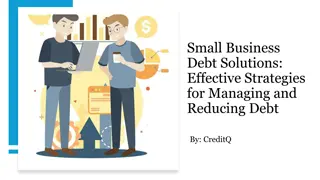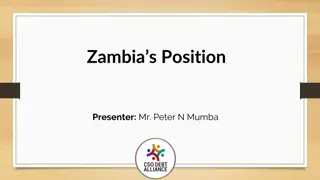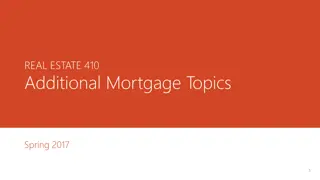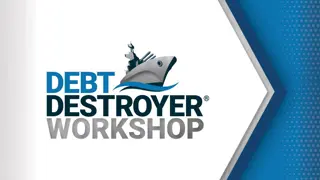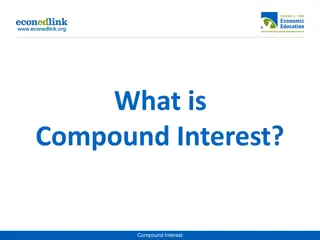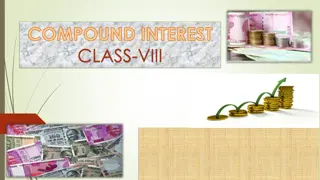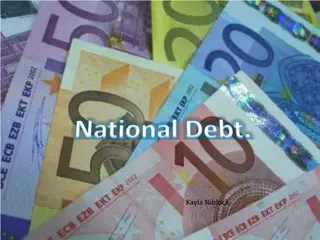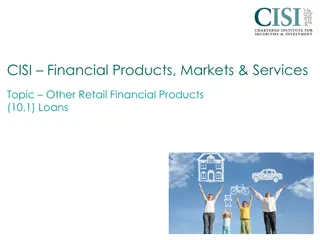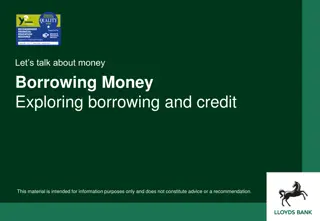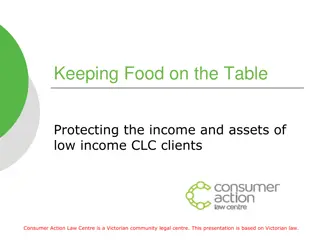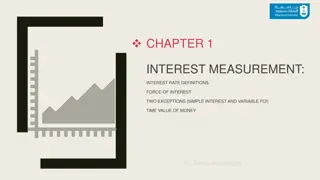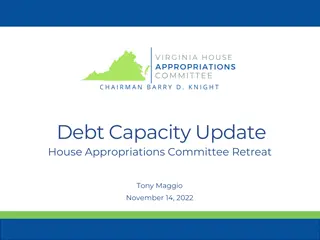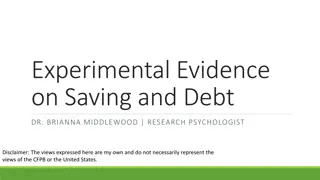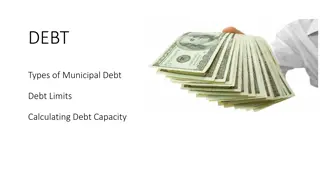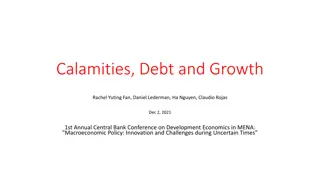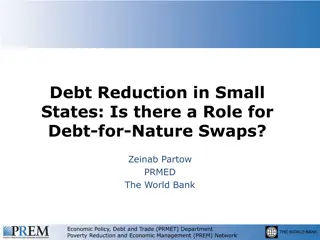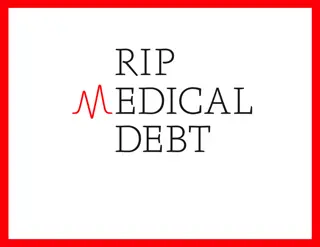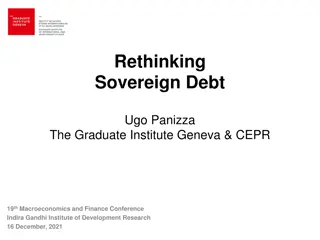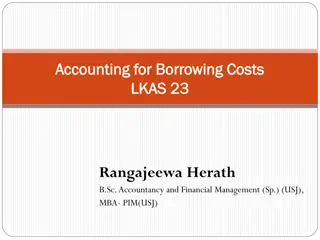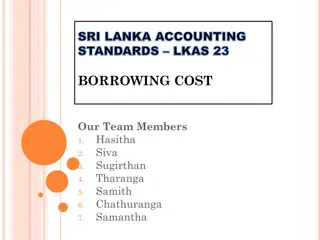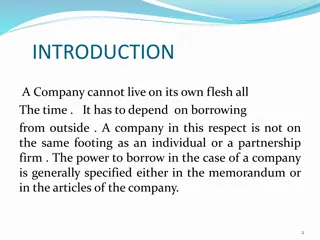Understanding Debt, Interest, and Borrowing Money
Explore the concepts of debt, interest, and borrowing money in this informative presentation. Learn about the types of debt, reasons people borrow money, average debt per person in various countries, costs of personal loans, the time value of money, and how interest rates affect the value of debt over time. Discover different types of loans and credit options, including credit cards and mortgages. Gain insights into the differences between debit and credit cards to make informed financial decisions.
Download Presentation

Please find below an Image/Link to download the presentation.
The content on the website is provided AS IS for your information and personal use only. It may not be sold, licensed, or shared on other websites without obtaining consent from the author. Download presentation by click this link. If you encounter any issues during the download, it is possible that the publisher has removed the file from their server.
E N D
Presentation Transcript
INTEREST AND DEBT Ing. Darya Dancakov , PhD. Department of Banking and Investment
Debt definition. Public and private debt. Debt = is a subset of liabilities or financial obligations that a party must make. Debt can involve real property, money, services, or other consideration. Public (government) Debt Private (households, companies)
Why do people borrow money? To get quick access to finance for covering short- and long-term needs; To buy expensive goods; To solve short-term financial problems;
Who borrows most? Average debt per person in Slovakia: 7,990 (Source: Trend.sk, 2020) Average debt per person in Great Britain: 9,246 (Source: Money.co.uk, 2021) Average debt per person in USA: $ 90,460 (Source: CNBC report, 2021)
How much do personal loans cost? INTEREST INTEREST RATE APR Do not compare advertised interest rates, but always look at the APRC!
The time value of money The value of money changes over time a dollar today is worth more than a dollar tomorrow Present value Future value 1 ?? = (1 + ?)? ?? = (1 + ?)?
How does it work? Suppose you borrow 25,000 for 8 years at interest rate of 3.5% p.a. What is the value of the debt at the end of the 8th year? Future value Present value 32 920,23 (1 + 0,035)8= 25 000 FV = 25 000 (1 + 0,035)8= 32 920,23 PV =
Types of loans and credit Credit card/authorized bank account overdraft; Consumer credit; Mortgage (buying a house, reconstruction); Credit from non-bank lenders. Do you know the difference between a debit and a credit card?
Credit card A credit card is a type of payment card which offers a line of credit that lets you borrow money to make purchases. Every new payment = new borrowing (new credit) Grace period when the interest is put on hold from 30 to 55 days (depending on your bank) Pros: you can pay for emergencies, even if you don t have the cash on hand; 0% interest period; Cons: over-limit fees, penalties, charges, high interest, etc. What are the benefits of a credit card?
Credit card case study John took a consumer loan and was proposed to use a credit card issued by his bank. The billing date of a credit card is 3rdof every month, and the payment due date is 15thof the same month. The minimum amount due is 5% of the total outstanding on the credit card. It represents the least sum of money that John must pay every month towards his outstanding bill on the credit card. Credit card monthly limit is EUR 6,500 (the maximum amount you can borrow) Interest rate 19.5% p.a. Penalty interest rate 5% p.a. John can spend or withdraw up to 6,500 euros every month. He has already spent 500 euros in April. If he returns this amount by the 15th of the next month, no interest will be charged. However, if he does not pay his balance in full by the due date, he will have to pay interest at the rate of 19.5% for the entire amount that he spent in the previous month, i.e. the previous billing period. This means that the interest is EUR 97.5. In addition, John must keep in mind the minimum amount due of 5%, he is required to pay every month. In this case, it is EUR 25. If he make late payments, he will be charged with a penalty interest of 5%.
Authorized overdraft This is an authorized overdraft of funds on your bank account; An overdraft is like any other loan: the account holder pays interest on it and will typically be charged a one-time insufficient funds fee; An approved credit limit up to EUR 5000; The amount due does not have to be paid at the end of the month; Any amount that comes to your account automatically reduces the sum of your borrowed amount; Pros: you can easily withdraw money, pay with a card even if there are no funds on your account Cons: higher interest rates about 19% p.a. What is the difference between authorized and unauthorized overdraft?
Authorized overdraft case study John has an authorized overdraft linked to his bank account. He wants to buy new smartphone for 600, however his checking account balance is only 100. Since John still lives with parents and doesn t pay them any rent, he decided to buy the phone immediately. After completing his order in the e-shop, he paid online with his card and overdraft his bank account by 500. John plans to pay back his overdrawn account as soon as he has enough money, however his monthly salary comes only next month, so he will be charged an overdraft fee. Interest rate19.0% p.a. Monthly interest payable: 8.57 Was it a reasonable purchase?
Consumer credit or loan Is a short-term loan used to finance the purchase of goods or services; Repayment period from 1 to 8 years. Pros: without providing a security to the bank, cheaper than credit card (lower interest rates and fees); Cons: higher total costs with longer repayment periods.
Consumer credit case study John wants to buy a new car, so he applied for a consumer credit in the amount of 20,000. He asked two banks to prepare an offer. Which one should he accept? Bank SLSP TB Interest rate 5,99 % 5,99 % APR 7,99 % 6,68 % Monthly payment 279.81 236.54 Total amount paid 26,861.76 25,599.84 Will be the purchased item useful even at the time of the last installment (after 8 years)?
Mortgage Is a long-term loan for housing (buying family house, apartment of building land); Repayment period up to 30 years; Pros: low interest rates, longer repayment period; Cons: security against property needed, mortgage amount only up to 70 %, 80 %, 90% LTV (loan to value)
Budget rule 10:20:30:40 10 = Financial reserve 20 = Long-term assets 30 = Loan installments 40 = Consumption John earns 1,000. He is single, without children and lives with parents without paying them a rent. Until now, he was spending all his money on entertainment, but now he wants to buy his own apartment. How should he plan his monthly budget to manage his money wisely? Financial reserve Retirement savings, life insurance Maximum loan installment Consumption:household,traveling, hobby and free time 100 200 300 400
If I can not repay my loan Late payments Skip payments for several months Personal bankruptcy Distrait of debtor
Number facts to think about More than 1.38 mil. of active distractions of the debtors asstes in Slovakia (December 2020) More than 162,000 submitted requests for skipping payments in Slovakia (June 2020) 3,636 personal bankruptcies (March 2020) and 1,250 (March 2021)



